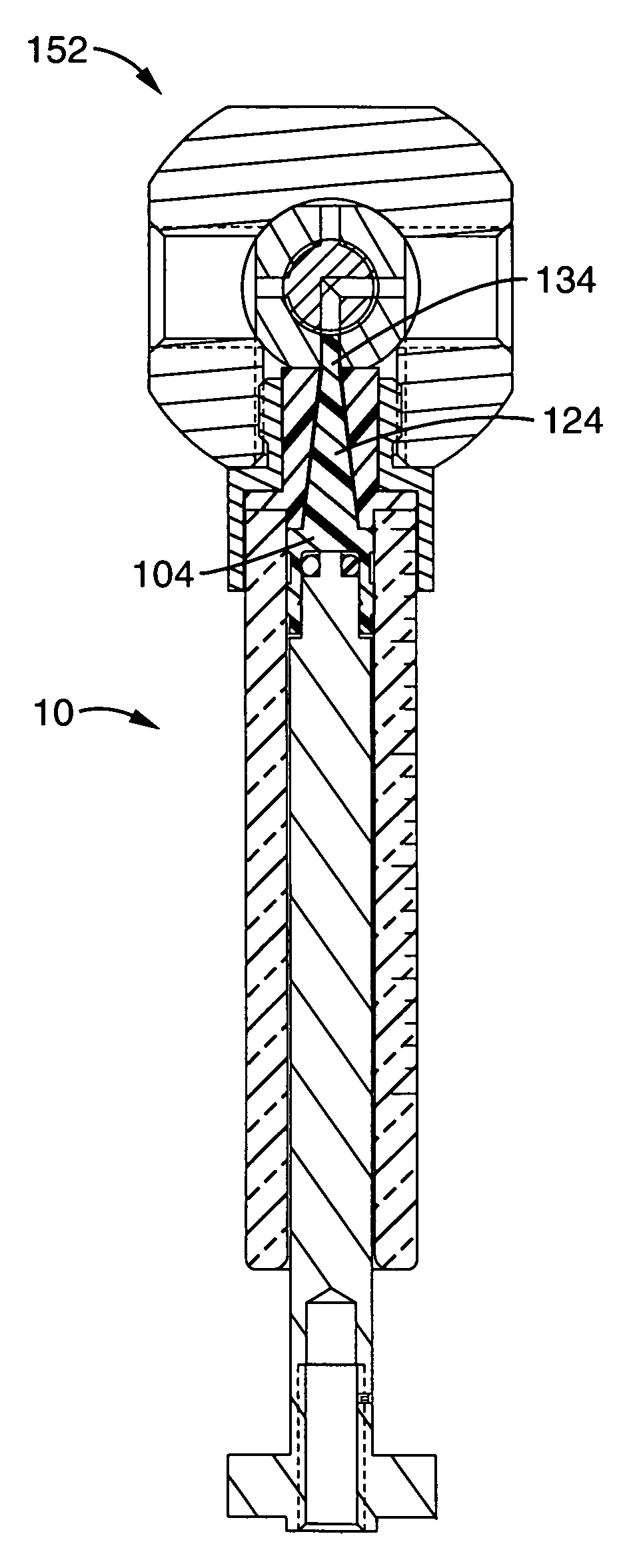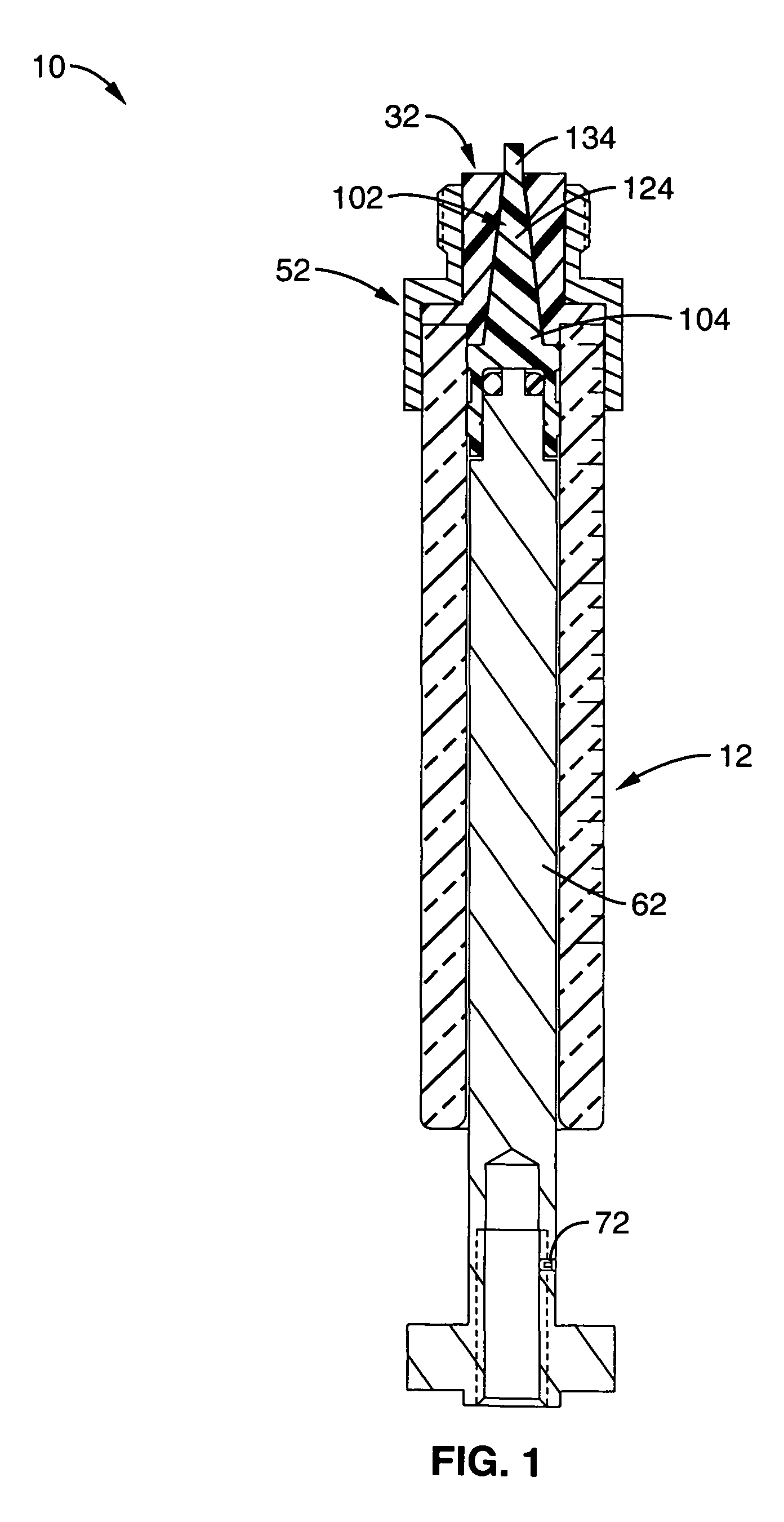Negative dead volume syringe
a dead volume, negative technology, applied in the field of syringes, can solve the problems of inability to accurately and reliably pump liquid, the system is dead, and the accuracy and reliability of the pumping of liquid is unacceptable, so as to improve the efficiency of forcing, improve the efficiency of pumping, and reduce the loss of fluid
- Summary
- Abstract
- Description
- Claims
- Application Information
AI Technical Summary
Benefits of technology
Problems solved by technology
Method used
Image
Examples
Embodiment Construction
[0041]Considering the drawings, wherein like reference numerals denote like parts throughout the various drawing figures, reference numeral 10 is directed to a negative dead volume syringe according to an embodiment of the present invention.
[0042]Referring to FIG. 1, and in one embodiment, the negative dead volume syringe 10 is comprised of a syringe body or barrel 12, a syringe tip 32, a multi-diameter hub 52, a linearly reciprocable plunger 62, and a plunger tip 102.
[0043]Syringe Body or Barrel 12
[0044]Referring now to FIGS. 1 through 4, the syringe body or barrel 12 of the negative dead volume syringe 10 is comprised of a cylindrical sidewall 14 axially-extending between an open distal (front) end 16 and an open proximal (rear) end 18 of the barrel 12. The cylindrical sidewall 14 includes an interior surface 20 that defines an open ended bore or chamber 22 axially extending through the barrel 12 between the open distal end 16 and the open proximal end 18 of the barrel 12.
[0045]Ad...
PUM
 Login to View More
Login to View More Abstract
Description
Claims
Application Information
 Login to View More
Login to View More - R&D
- Intellectual Property
- Life Sciences
- Materials
- Tech Scout
- Unparalleled Data Quality
- Higher Quality Content
- 60% Fewer Hallucinations
Browse by: Latest US Patents, China's latest patents, Technical Efficacy Thesaurus, Application Domain, Technology Topic, Popular Technical Reports.
© 2025 PatSnap. All rights reserved.Legal|Privacy policy|Modern Slavery Act Transparency Statement|Sitemap|About US| Contact US: help@patsnap.com



